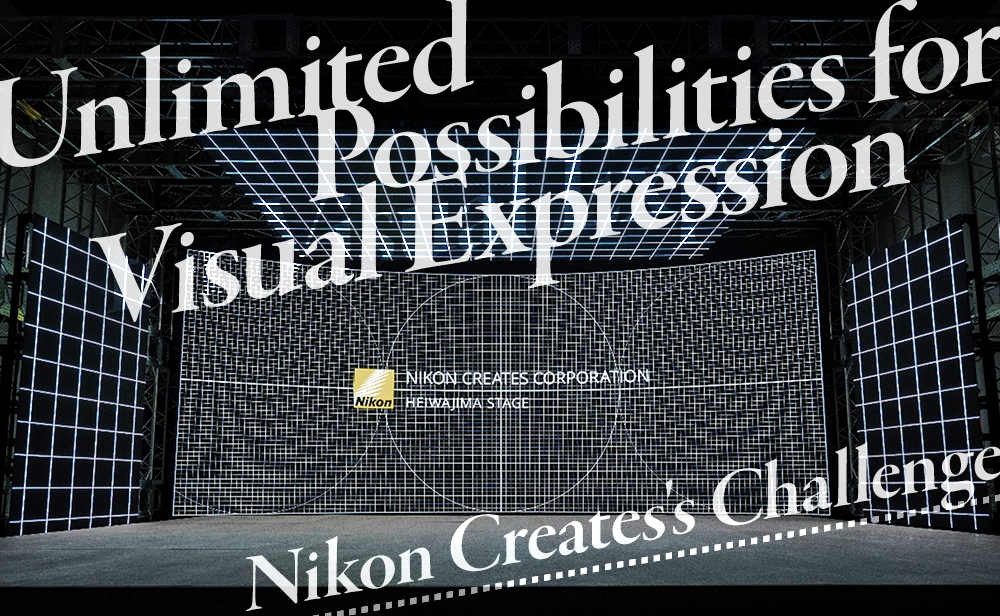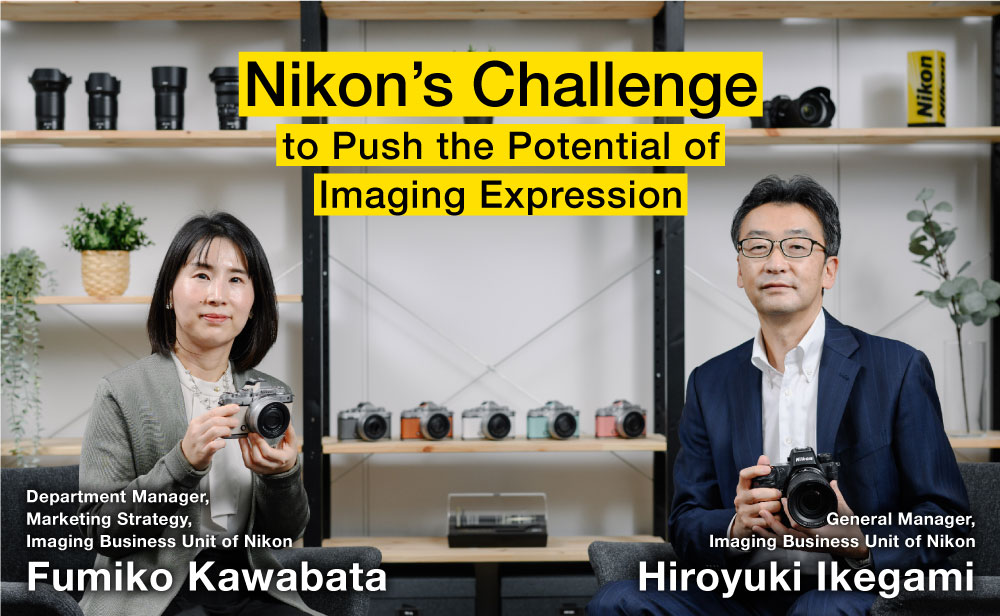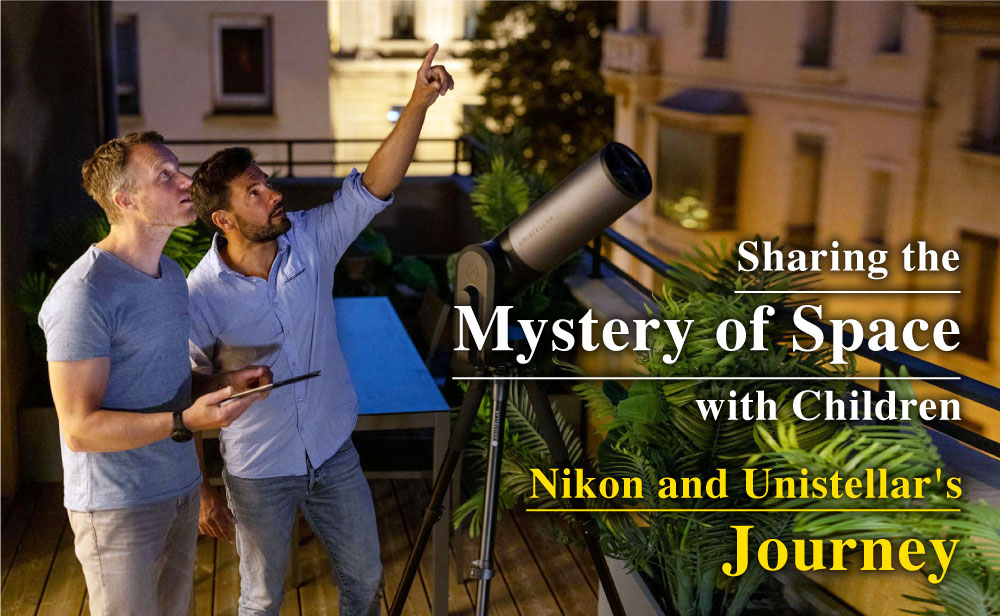
Contributing to the Advancement of Biological science and Drug discovery: The Current Position of Nikon's Healthcare Business
Since the launch of the JOICO, the first microscope designed by Nikon released in 1925, Nikon's microscope technology has evolved over the course of 100 years. Today, our long-cultivated technology and knowledge of "observing and evaluating cells" is contributing to the advancement of bioscience research and drug development.
INDEX
This is all possible thanks to the work of our Healthcare Business Unit and Nikon's subsidiary company, Nikon Solutions Co., Ltd. Today, we do not limit ourselves to the sales of products like microscopes and retinal diagnostic systems. By providing solutions utilizing Nikon's core technology of precision optics and imaging/analysis technology, we are shifting from "sales of things" to "sales of solution," contributing to the improvement of people's quality of life (QOL).
So what are Nikon's current efforts? And what is the Organ-on-a-Chip Imaging and Analysis contract service conducted at the Nikon BioImaging Lab, which supports drug discovery research using cells? We sat down with two employees knowledgeable of onsite operations, Kenji Miyamoto, Ph.D (Manager of Drug Discovery Research Support Department,Bioscience Sales Division, Nikon Solutions Co., Ltd.) and Kazuaki Tokunaga, Ph.D (Section Manager of East Japan Application Specialist Section, Application Engineering Department, Bioscience Sales Division, Nikon Solutions Co., Ltd.), to ask about Nikon's future vision.

Going beyond offering microscopes and supporting applications
—Please tell us what values Nikon is providing in the healthcare field.
Miyamoto: Throughout Nikon's 100-year history, we have established businesses like the Imaging Products Business, which handles cameras; the Precision Equipment Business, which handles lithography systems to manufacture semiconductors and flat panel displays; the Components Business, which handles light sources/optical instruments, optical processing, etc.; the Industrial Metrology Business, which handles industrial measuring instruments and industrial microscopes; and the Healthcare Business, which deals with ophthalmology instruments and biological microscopes. Of these, the biological microscope possesses the longest history. Nikon has always utilized state-of-the-art optical technologies to develop high-precision observation of microscopic structures, and as a result, we have provided value by contributing to the advancement of science. However, we are now taking our efforts a step further by focusing on providing solutions through application support for customers.


—I see, so this is what you were alluding to when you mentioned shifting from "sales of things" to "sales of solution." What kind of solutions are you providing to solve customers' issues?
Miyamoto: For example, a solution we are providing for pharmaceutical companies is the image acquiring and analysis contract services for organs-on-a-chip. Organs-on-a-chip are gaining attention as an alternative for animal testing. Nikon has collaborated with organ-on-a-chip makers to obtain knowledge on how to observe a variety of organs-on-a-chip through microscopes, aiding pharmaceutical companies looking to utilize them to study the toxicity of drugs and medicine. Another example of our solutions is in the field of regenerative medicine—specifically, the proposal of cell culture observation system and image analysis software during the cell culturing process. By acquiring images of the cultured cell and analyzing them, we can assess the cell's status with numbers during the culture process, allowing for indicators and objective process management. We believe that by contributing to the achievement of efficient process management, we can reduce the workload of professionals in the field of regenerative cellular medicine.
Stabilizing cell culture through objective indicators and process management
—How are Nikon's technologies aiding cell culture?
Tokunaga: We can broadly categorize our contributions into three main areas of "culture," "evaluation," and "analysis."
The first is the area of "culture." In the bioscience field, it is extremely important to culture cells suited for each experiment, as its subjects are organisms like cells and tissues. Precautions and processes for cell culture differ according to each cell type, and researchers much proceed with caution so that the cell's characteristics do not change during the experiment due to mishandling. Up until now, the difficult nature of this process caused discrepancies depending on the handlers. However, as we previously mentioned, cell culture imaging technologies can allow for stable processes to eliminate discrepancies among individuals. Moving forward, we intend to begin offering customer support from the cell culture phase as well, rather than exclusively acquiring images after the culture process is finished.
Miyamoto: Next are "evaluation" and "analysis." To review the multiplication of cultured cells, researchers use microscopes to visually inspect changes in cell count or area over time. In cases like this, one researcher may conclude the difference as a 30% increase, while another researcher may observe the same sample as showing a 40% increase. But ideally, these discrepancies should be minimized from a process management perspective. We aid in doing so by acquiring images and analyzing them to provide objective data that indicate changes in cell count, area, viability, and characteristics. We hope to lift researchers' workload and support reproducible process management through these efforts.

—So you removed elements contingent on individual characteristics and formed an objective indicator?
Miyamoto: Yes, that is our description. In addition to what we just discussed, I also believe objective indicators can contribute to education and training, not just efficient process management. Specifically, researchers can compare their own visual inspections—say, the rate of cell increase—with that determined by image analysis to review their own instinct in comparison to objective assessments. Each user can utilize analysis results to reflect on their own evaluations—perhaps they thought there was more growth than there actually was, or maybe they see themselves becoming more accurate over time.

Tokunaga: In the case of one company that manufactures vaccines utilizing cells, the timing of collecting cultured cells becomes critical in the creation of vaccines. Formerly, each researcher timed collection at their own discretion, which inherently caused discrepencies in cell quality. Under these circumstances, the main concern centered around how accurately skills could be transferred from veteran researchers to the next generation. However, by implementing Nikon's software, collecting cells at the most appropriate timing is possible with any handler.
—What kind of innovation do you expect to see in the future as people gain the abilities of veteran researchers?
Miyamoto: One possibility is that organizations with few veterans can receive equipment support through implementing state-of-the-art devices and software, allowing for efficient training of researchers. We may also see more case studies of experiments utilizing new cells. Or perhaps implementing automated systems can lift the workload of researchers so that they may utilize that time for more innovate work, contributing to business expansion. In the future, we also hope to provide a package solution for system fabrication from Nikon. We believe that this is another area in which we can realize becoming "a key technology solutions company in a global society where humans and machines co-create seamlessly."
Tokunaga: Until now, cell culture followed an experience-based method, but digitalization can realize the difficult task of 24-hour management for efficient culturing in a more stable environment. Providing innovations that society needs will become possible by standardizing cell quality management in alignment with past experiences.

Aiding abolishment of animal testing with "organ-on-a-chip" and its contributions towards SDGs
—Please tell us about Nikon BioImaging Lab. What technologies and services do you provide?
Miyamoto: Nikon BioImaging Lab of Japan was established in May 2022 within the Shonan Health Innovation Park (Shonan iPark) in Kanagawa Prefecture. Outside of Japan, we also have labs in the U.S. and Netherlands. Nikon Group's veteran workers skilled in microscopic cell imaging work here, providing optimal solutions for customers' issues related to image analysis through advising on various tasks, including equipment setting and specific imaging methods.
From our position, this gives us an opportunity consult with numerous companies and grasp the needs of a wide range of customers. We hope to provide even more solutions by accumulating knowledge during this process. Ultimately, operating Nikon BioImaging Lab will boost trust in Nikon as a company, leading to the purchase of products later on.

—Why is Nikon's service to provide imaging and analysis of organs-on-a-chip necessary?
Miyamoto: Currently, there is a shift towards eliminating animal testing, which is partly in correlation with achieving SDGs looking towards 2030. While the EU has already prohibited animal testing for cosmetic products, the field of pharmaceuticals has continued testing on animals to assess the effects and toxicity of drugs. In order to eliminate animal testing altogether, organs-on-a-chip can be extremely valuable. Organs-on-a-chip are created by curating cells in a container small enough to fit in the palm of a hand. It is a reproduction of select organs that make up the human body, such as blood vessels and nerves. By administering drugs to reproductions of the human body that are organs-on-a-chip, we can evaluate the effect and toxicity of certain drugs without the need for animal testing.
Organs-on-a-chip have already been implemented in many settings, but selecting which chips to choose among a broad and diverse lineup can pose a dilemma for companies, as implementing special equipment by various makers can add up to become a costly investment. At Nikon BioImaging Lab, we consult customers on what experiments they plan to conduct, and collaborate with organs-on-a-chip makers to advise customers on what chips are best suited for their objective while providing knowledge on imaging and analysis. By conducting prior consultations, we help customers to evaluate organs-on-a-chip without the immediate need for implementing special equipment.
Co-creating with customers for solutions that enrich society
—What contributions can Nikon make by shifting from "sales of things" to "sales of solution?"
Miyamoto: By shifting from "sales of things" to "sales of solution," Nikon can propose specific solutions to customers with issues on image acquiring/analyzing, rather than just offering products. This can also allow us to accumulate more knowledge through interactions with a wider range of customers, which can later help us to provide solutions to even more customers. These are some ways we hope to contribute to society. Instead of ending our services with sales of products, our aim is to take another step further to provide solutions to customers' issues.
—So you intend to offer total support for customers rather than simply selling products.
Miyamoto: Customer feedback are also reflected in development of new products. What functions are customers anticipating from Nikon products? And what difficulties are users encountering with them? Unfiltered opinions to questions like these are extremely valuable. While market research is also a significant element of product development, raw feedback often reveals the true needs of customers that are not reflected in marketing activities, so we hope to utilize them in the future, as well.

—Please tell us of your future prospects.
Miyamoto: By focusing more on "sales of solution," we hope to construct even closer relations with customers and promote co-creation. This will help us to develop appealing new products and launch solutions that can contribute to solving issues held by a number of people. Nikon holds a corporate philosophy of "trustworthiness and creativity." We will continue co-creating with customers to offer results that uphold both of these philosophies.
- *Title and work duties are those at the time of interview
Nikon Solutions Co.,Ltd., Ophthalmic Website
Nikon Solutions Co., Ltd. corporate information.
Originally published: May 31, 2023.



